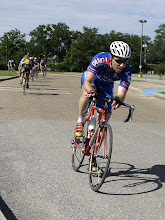Things continue to change.
I think it's important that you continue to assess where you are with your goals and priorities. It's so easy to get off track with all the things that try to take your time.
I'm doing the same thing with Gulf Coast Cycle Fit. I continually look back and check where I've come from and make corrections so that I move towards the goals that I have set.
It's my goal to help riders become more proficient as cyclists. I seek to achieve this through bike fitting, pedaling analysis and coaching.
I've had the opportunity to work with many of our local cyclists by offering bike fitting services. However, some things are missing. It's my goal to help riders become more proficient cyclists and I think I'm missing the mark. Most riders don't understand the need for technique training. The bike fit process is just the initial step. It's equivalent to being sized with the right size golf clubs but not being shown how to swing. Great, now what do you do with the tools you have? I'm beginning to see that providing fit services without training services is a bit of a disservice to the rider. I want the rider to achieve more.
Going forward, I'm going to integrate the fitting services into a larger package. The package price will go up because we will spend more time together. The cost per hour will not change. Going forward, Bike fitting services will be increased from a 2 hour session to 4 hours. This will include bike fitting services, pedaling analysis, efficiency testing and technique training.
Don't get me wrong. This is not a full time coaching relationship. This is only about fitting and training to enhance function and performance by improving technique.
I want each cyclist to get better. Everyone has the potential to get more out of their riding experience.

